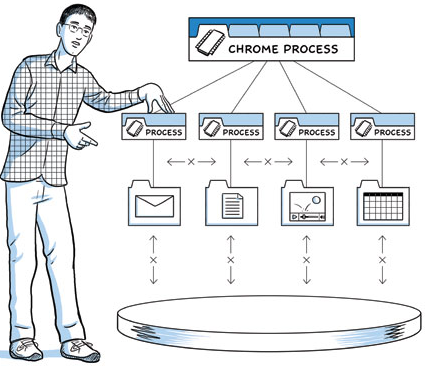
Google launched its Chrome Web browser on September 1, 2008—three years ago today. In the time since its debut, Google's Web browser has attracted a considerable following and influenced other browser vendors. To celebrate the anniversary, Google has published an interactive HTML5 infographic that presents the history of the major Web browsers and Web standards.
Chrome's contributions to the Web and browser design are significant. Google set the pace of development for modern browsers by being the first browser vendor to adopt a radically shorter development cycle and a release management strategy that emphasizes fast-paced incremental improvement. Chrome's transparent update system and channel-based prerelease distribution model are being adopted by Firefox and could eventually be picked up by other browser vendors.
Chrome's distinctive minimalist design has also changed the way that browser vendors think about usability. Chrome's approach to paring down the interface and offering a more streamlined user experience has been embraced by other browsers. Google took the lead on some controversial moves, like not displaying "http" in the location bar.
The technical influence of Chrome can even be felt outside of the browser ecosystem. The performance of Chrome's sophisticated V8 JavaScript engine and the ease with which it can be embedded in other software have led to its adoption in a range of other environments. For example, V8 was used to produce Node.js, a server-side JavaScript runtime that is popularizing the use of JavaScript for backend Web development.
Although Chrome has come a long way, the browser still lags behind its competitors in some key ways. When we first reviewed Chrome in 2008, one of our biggest gripes with the user interface was the lack of tab overflow handling. After three years, this issue still hasn't been fixed. Chrome's user interface for browsing history is another major weak area relative to other browsers. History autocompletion in the Omnibox is also quite limited compared to Firefox's AwesomeBar.
Despite the limitations, Chrome's audience has grown explosively since its 2008 launch. According to statistics from StatCounter, the browser's marketshare hit 10 percent last year and continued growing to 23 percent, as of this month. It's become an important part of Google's product landscape, serving as the central pillar of the company's ambitious Chrome OS operating system.
After three great years of innovation and raising the bar, Chrome's future looks bright.
Listing image by Illustration by Scott McCloud
reader comments
162